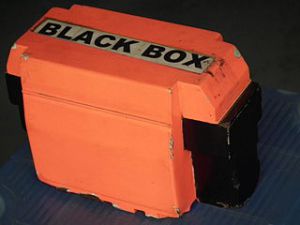
image by Rameshng [CC BY-SA 3.0] via Wikimedia Commons
“Nobody lives with conceptual black boxes and the allure of revelation more than the philologist or the scholarly editor. Unless it’s the historian—or the archaeologist—or the interpreter of the aesthetic dimension of arts and letters. Okay, nobody lives with black boxes more than the modern humanities scholar, and not only because of the ever-more-evident algorithmic and proprietary nature of our shared infrastructure for scholarly communication. She lives with black boxes for two further reasons: both because her subjects of inquiry are themselves products of systems obscured by time and loss (opaque or inaccessible, in part or in whole), and because she operates on datasets that, generally, come to her through the multiple, muddy layers of accident, selection, possessiveness, generosity, intellectual honesty, outright deception, and hard-to-parse interoperating subjectivities that we call a library.” (Nowviskie 2015 – her emphases)
Leaving aside the textual emphasis that is frequently the focus of digital humanities, these “multiple, muddy layers” certainly speaks to the archaeologist in me. The idea that digital archaeologists (and archaeologists using digital tools for that matter) work with black boxes has a long history – for instance, the black-boxing of archaeological multivariate quantitative analyses in the 1960s and 1970s was a not uncommon criticism at the time. During the intervening forty-odd years, however, it has become a topic that we rarely discuss. What are the black boxes we use? Where do they appear? Do we recognise them? What is their effect? Nowviskie talks of black boxes in terms of the subjects of enquiry – which as archaeologists we can certainly understand! – and the datasets about them, but, as she recognises, black boxing extends far beyond this.


